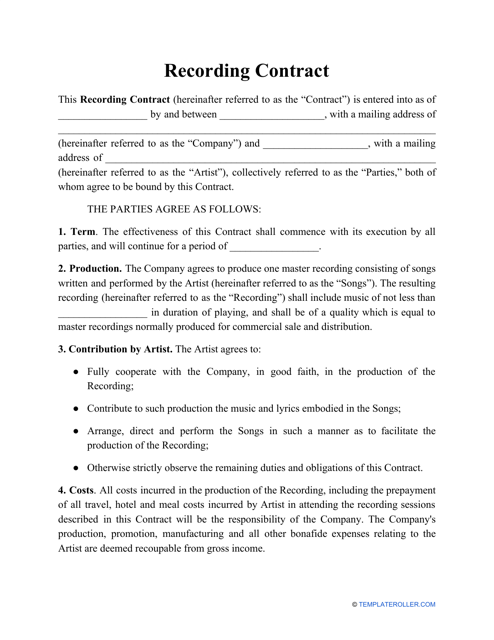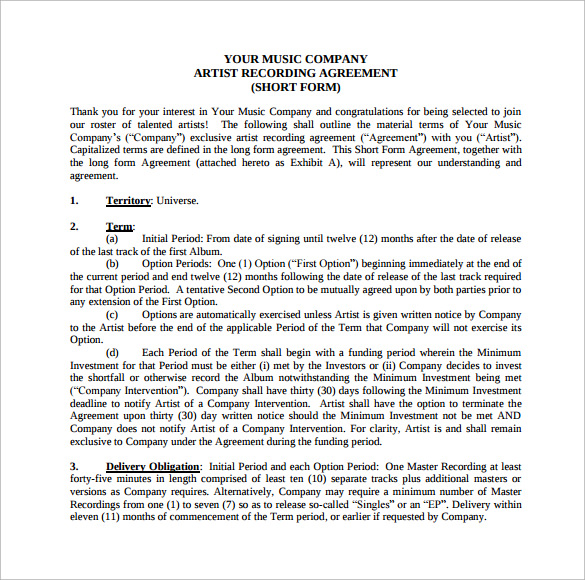
I find that more and more producers are demanding a percentage of SoundExchange revenues on songs they produce.

PPD.ģ) Should Your Producer Get SoundExchange and Other Revenues? Industry standard is 2-5% for points, either on the suggested retail price (SRLP) or published price to dealer (PPD). In other words, until you recoup all of your costs in relation to the masters, the producer doesn’t start getting revenue. My advice: make sure that there is language inserted that allows you to recoup all expenses related to the production and exploitation of the masters before these points kick in.

For example, 4 points equals 4% of net record revenues from the masters produced by your producer. A point is simply a percentage of record sales. It is industry standard for your music producer to receive “points” on the songs they produce. Almost always, you should own the masters. In rare circumstances, the producer might own the masters or have some co-ownership interest, but that is definitely not the norm.

Before you enter the studio, here are some key points to look for and understand:įirst and foremost, you should own the master recordings once the producer fee is paid.
RECORDING ARTIST CONTRACT SAMPLE FULL
Now the producer sends over a 10-page contract full of legalese regarding record royalties, songwriting splits, SoundExchange revenues, producer advances and more. I searched “artist commission agreement” to find just these few examples-there are many more available to view online.So, you’ve found the perfect producer for your upcoming recording project. You can view a sample contract for an art commission here, here or here. This means you can put an image of the work on your website, and use it for portfolios, etc. Unless you are signing over the rights to you work (there should not be any reason for this sort of agreement, normally), you should stipulate that you retain the copyright of the work. Many clients will assume that since they are paying for the work, they own the rights to it. If you are not installing the artwork for them, you should make sure that it has proper hanging hardware already attached to the work to make it as straightforward as possible to hang.
RECORDING ARTIST CONTRACT SAMPLE INSTALL
Indicate whether you will install the work for the client, or whether they need to arrange this separately. Indicate whether you will deliver the work to the client or whether they need to arrange their own delivery. If applicable, indicate whether the work will be framed or unframed, or if framing will cost extra. Many artists also set up a viewing and meeting date for when the work is partially completed. You should agree upon a completion date for the work, making sure that you give yourself enough time for revisions and drying, if necessary. Be careful if you indicate that final payment is due upon approval of the work by the client-you could find yourself editing the work over and over until the client is satisfied. Final payment could be due upon delivery of the work, or it could be due upon final approval of the client. You should list the total cost of the work, the deposit necessary to begin the commission, and when final payment is due. It will also eliminate potential clients who aren’t that serious. This is to protect the artist’s investment in materials and time. It is quite reasonable for an artist to collect 25% to 50% of the full cost of the artwork upfront before beginning the work. It could be specific, for example, “the artist _ agrees to complete a 30 x 30 inch oil painting on canvas for the client _, depicting a sheep and using mostly blue hues.” It could be loose: “The artist _ agrees to create an abstract painting for the client _.” If anything is verbally agreed upon, it should also be in writing. Use this description to list what aspects of the work are agreed upon in advance, such as size, colours, materials, etc. POINTS TO INCLUDE ON YOUR COMMISSION AGREEMENT CONTRACT:


 0 kommentar(er)
0 kommentar(er)
